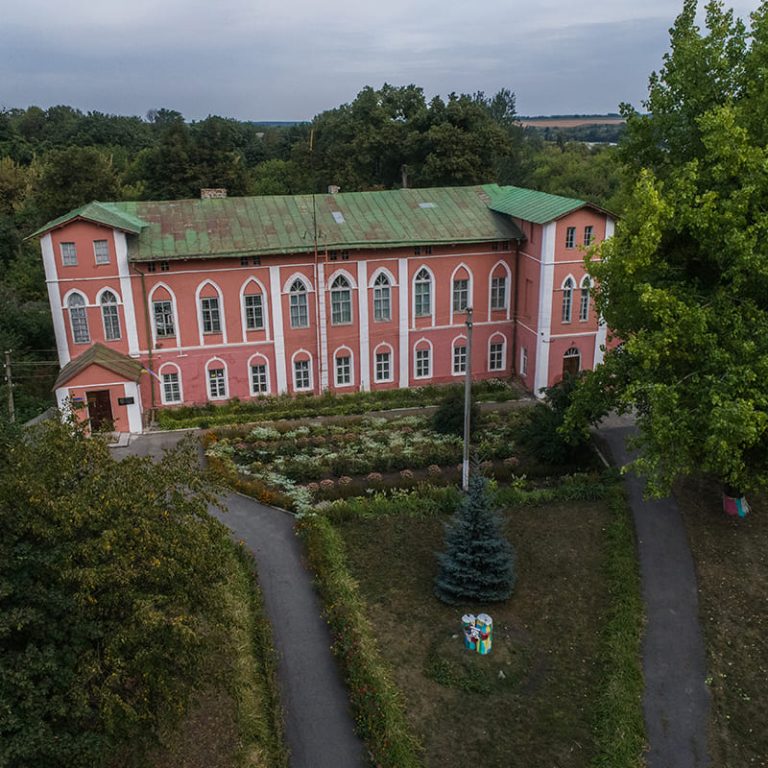The village of Parkhomivka in Slobozhanshchyna is famous for its art museum, which exhibits world-renowned paintings, diagrams, sculptures, and archaeological and ethnographic works. The museum collection appeared thanks to a village history teacher: the self-taught art expert, Afanasii Lunov, who united his students around one common cause — art.
School museums in Ukraine started to appear between the 19th and 20th centuries, but they gained widespread popularity only in the 1950s. At that time, school students participated mainly in the search for valuable items, and in the organization of the exhibitions. Usually, exhibitions were held in special rooms on the school premises, where the exhibits of regional history were displayed.
In the 1950s, Ukrainian art critic Borys Voznytskyi lived and taught in Vynnyky, a small town near Lviv, where he created a room-museum. He exhibited collections that he obtained with his students during expeditions to the nearest villages. The museum itself did not survive to the present day, but lots of its exhibits are now displayed at the Historical Museum of the town of Vynnyky, and in Olesko Castle.
The museum in Parkhomivka was also initially opened as a room-museum of regional history. Yet, with the course of time, it scaled up due to the amount and value of its exhibits. Unlike the museum in Vynnyky, this one is still working. For more than 30 years, it had been working on a pro-bono basis. In 1986, it became a department of the Kharkiv Art Museum.
Since 2001, the museum in Parkhomivka has been managed by Olena Semenchenko, Afanasii (Panas) Lunov’s student. Being a student of the 8th grade, she had an opportunity to try herself in the role of a school museum director. Back then, high school students (students of the 8th–10th grades) not only collected exhibits for the museum and gave tours after classes, but also could try themselves in the roles of directors, conservators, etc.

Father of the museum
Afanasii Lunov was born in 1919 in the village of Shcheholok in Kursk governorate. As a teenager, he and his family moved to Stalino (now Donetsk – ed.). Afanasii studied history at the Taras Shevchenko National University of Kyiv. In October 1941, Lunov was captured by the Germans in Nazi-occupied Kyiv. Till the end of the war, he had been forcibly kept at Nazi concentration camps.
After his return to the Ukrainian SSR in 1945, Lunov began teaching history at the secondary school in Parkhomivka and obtained an external degree in history for the second time in Kharkiv. During this period, he became interested in art, and spent most of his salary to collect artwork. In Kharkiv, Lunov often visited Blahovishchenskyi flea market, where antique porcelain and valuable paintings could be found in the postwar years.
Olena Semenchenko recollects that even back then her teacher tried to interest his students in art:
— He believed that the school curriculum was imperfect because it did not pay much attention to the aesthetic education of children. Therefore, he offered his students to open a museum of regional history in the school. The museum which would tell people about the history and culture of our village, Parkhomivka.

Museum from scratch
At the local school in Parkhomivka, Afanasii Lunov created ‘A young historian’ local history group, which later grew into ‘Rainbow’ history and art club. It was this club which later became the foundation for the future museum. At the club, students discovered the art, history and culture of the countries around the world.
Later Lunov offered his students to look in Parkhomivka and villages nearby for some exhibits they could use to constitute a museum. The children managed to gather a collection of antique coins, medals, icons, paintings, embroidered towels, and clothes. They exhibited everything they collected in the school classroom:
— Our museum was founded from scratch. In our core, we had neither Kharytonenko’s collection, who had owned Parkhomivka, nor items from other famous art collectors.
Pavlo Kharytonenko
Ukrainian landlord and manufacturer who was one of the richest sugar magnates in Ukraine. Today his collection is stored at ‘Nataliivka’ palace-park ensemble in Slobozhanshchyna, as well as in Sumy and Moscow.
This is how Lunov described student expeditions in his memories: ‘We literally dug across all neighbouring villages, looked into grandma’s chests and attics. Lots of the villagers brought the things, which they thought had some museum value, to us on their own. We managed to find real masterpieces among the collected items.
Source of memories
Lunov Afanasii Fedorovych. Articles, memories, documents, materials / Arranged by Pavlova O. H. - Kharkiv: Tymchenko, 2009 - 234 p.Starting from the middle of the 1950s, the teacher regularly arranged for his students’ trips around the cities of the USSR (a present-day territory of Ukraine, Russia, Lithuania, and Latvia. — ed.) and Germany. The teacher and his students visited museums, got acquainted with the museum workers, and met artists and writers. The trips were partially paid by the students’ parents, who worked at the local sugar factory.
— The children, who considered themselves to be young professional museum specialists, came up with an idea to create an art museum in Parkhomivka. To make this dream come true, Panas Fedorovych offered the students to write a letter to famous artists, cultural and museum experts.
The first to support the museum in Parkhomivka were artists from Kharkiv, who sent as presents around 50 artworks and items of artistic graphics to the students. Later, the Pushkin State Museum of Fine Arts in Moscow, the State Hermitage Museum, the State Russian Museum in Leningrad (now — Saint Petersburg), and Moscow Kremlin Museums responded to the letters. The museums sent exhibits from their funds for permanent storage in Parkhomivka.
How did art museums decide whether to send a part of the exhibits to Parkhomivka or not? After the Decree on creating the Museum Fund of the USSR was issued in 1965, the state had one shared museum fund, which made it possible to exchange collections of the Museum Fund and move them across the Soviet Union. The collaboration of the small museums with the major cultural institutions underlined socialist ideas of equality and fraternity of nations.
— Panas Fedorovych loved children and thought that they had to be brought up by real art. He believed that children had to see and feel not only with their brain but also, and most importantly, with their heart. His main idea was to raise a highly-cultured person.

Today hundreds of letters from artists and art experts, who Lunov built and maintained connections with, are available for research. Before reaching out to any of the artists, Afanasii Lunov examined their personality and art in detail. The museum founder got in touch with cultural experts during personal meetings, while visiting museums and exhibitions, and also thanks to friends’ recommendations.
At first, the exhibits of the museum, which were collected by the children, were displayed in two rooms of a local school, and just two years later, in 1955, they were moved to a former merchant house. Now it is hard to tell whether the requirements for storing museum items were met at that time. Particularly, if we talk about such parameters as temperature, humidity, and light. It is also hard to tell whether the museum had special equipment for storing the works.
Later, in 1963, Kharkiv television studio visited Parkhomivka to make a feature on the museum. During filming, the museum collection was relocated to the spacious mansion of count Podhorichani.
Ivan Podhorichani
A count of Serbian origin who owned Parkhomivka in the middle of the 18th century.The mansion was built in Palazzo style (Italian town palace-mansion with patio. — ed.). At the time, the exhibition of the museum occupied eight rooms at the first storey of the mansion and, starting from 1997, it has occupied the second storey as well.

Exhibition
The Parkhomivka museum had not only a small ethnographic collection, but also art pieces of icon-paintings of the 17th-19th centuries, as well as works of national, western, and eastern art (its national section included artworks of the artists from the former Soviet Union. — ed.)
Among the presents from the local people was a music box — polyphone. The instrument, which is more than one century old, was given to the museum with 30 metal phonograph records of old romances.
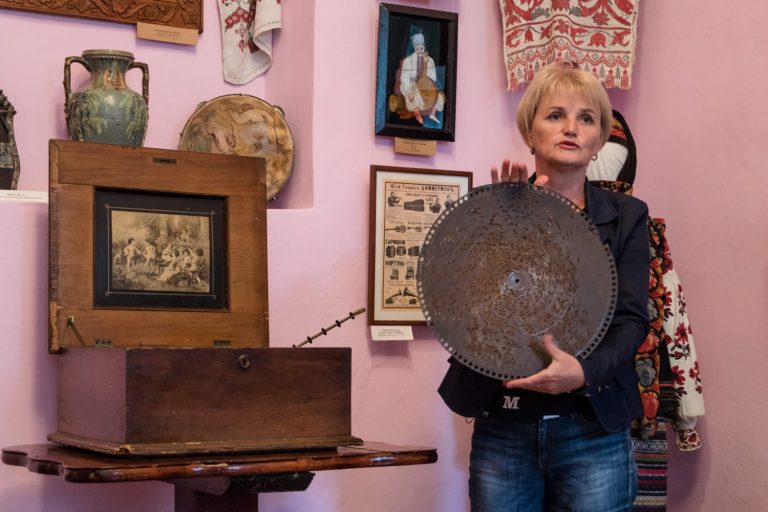
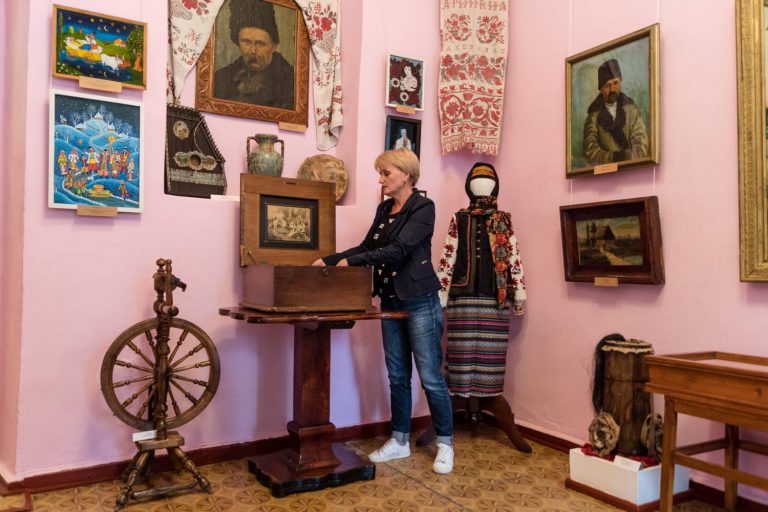
slideshow
The Parkhomivka museum has a lot of artworks painted by Ukrainian artists: Tetiana Yablonska, Anatolii Rudnytskyi, and a number of other famous artists. In the hall dedicated to the national art, you can also see two big portrait-mosaics: one of a composer Pyotr Tchaikovsky and another of a poet Vladimir Mayakovsky, both made by French artist of Belarusian origin Nadia Khodasevich-Léger.
The museum has works of avant-garde artists Wassily Kandinsky and Kazimir Malevich. Only a few paintings made by the founder of suprematism Malevich are exhibited in Ukraine. Among them are ‘Suprematist Composition 1’ from Mystetskyi Arsenal Collection in Kyiv and ‘Suprematism 65’ in Parkhomivka.
Suprematism
It is a movement in avant-garde art, which emerged at the beginning of the 20th century and was focused on geometric forms, texture and colour (from Lat. supremus – ‘the highest’).In the 1890s, Malevich’s father worked as an engineer at the sugar factory in Parkhomivka, while Kazimir studied at the local agronomical college:
— In his memories, Malevich mentioned Parkhomivka as well. The artist thought that it was the Ukrainian village that had inspired his future creative journey.
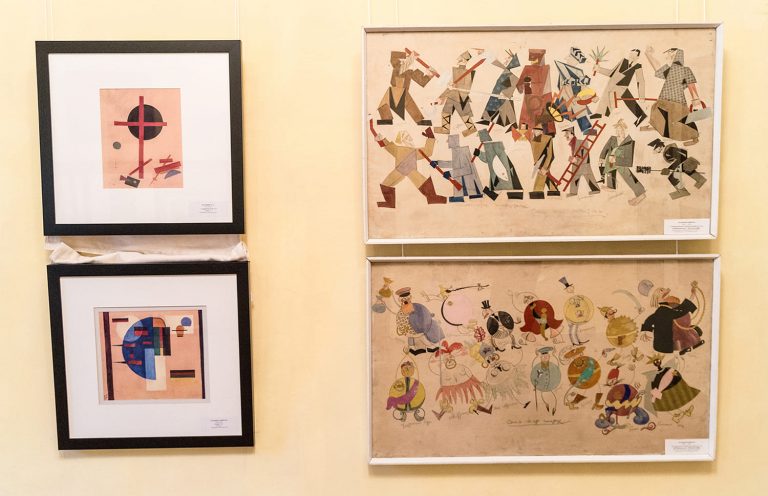
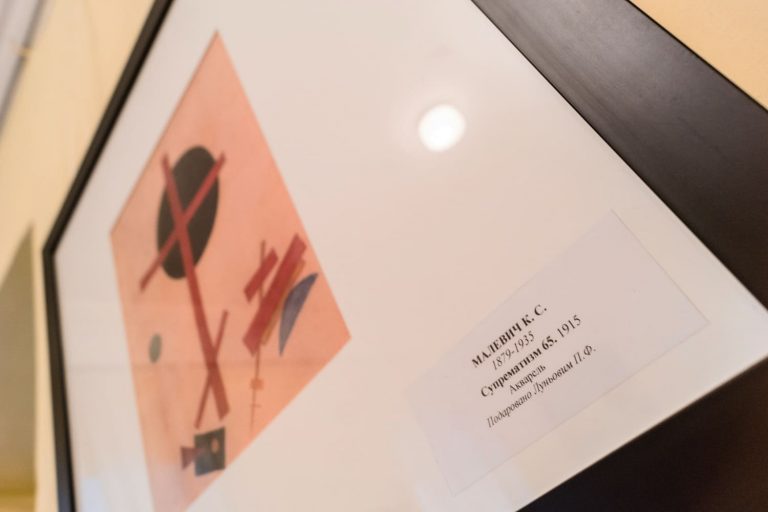
slideshow
Next to Malevich’s painting, there are two works by Vladimir Mayakovsky: ‘Seven Pairs of the Clean’ and ‘Seven Pairs of the Unclean’. These are sketches of the costumes for ‘Mystery-Bouffe’ socialist dramatic play which was finished by Mayakovsky in 1921.
Western European art of the 17th-19th centuries is represented by the paintings of the world-renowned artists, among which are Giovanni Piranesi and Ferdinand Bol, a Dutch etcher and Rembrandt’s student.
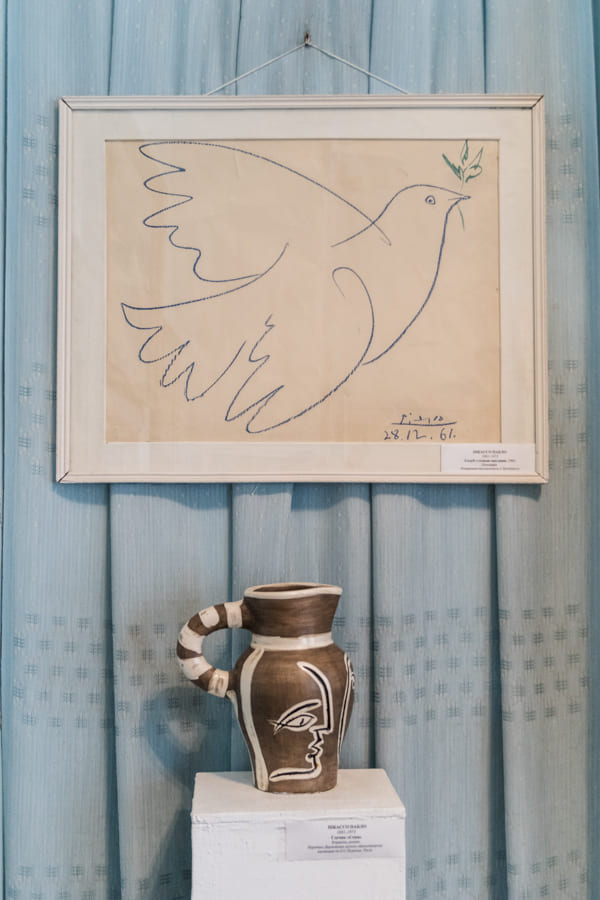
The part of the paintings in the museum was received as presents from the artists themselves. Some of the artworks were sent by the collection owners. For example, Pablo Picasso’s works ‘Portrait of Frederic Joliot-Curie’ and ‘The Dove and the Olive Branch’ as well as ceramics — ‘Owl’ vase and ‘Divers’ decorative plate — were presented to the museum by a poet Ilya Ehrenburg who was a friend of Picasso.
Oriental countries are represented in the Parkhomivka museum by the decorative and applied arts, created by Indian, Chinese and Japanese masters. The museum has also a copy of the ancient Egyptian sculpture ‘Queen Nefertiti’, which was granted by the Dresden Art Gallery.
While the artworks, sent from other museums and galleries, were already attributed (their authenticity and authorship were confirmed. — ed.), the pieces received as presents required additional examination. In the 1980s, when the Parkhomivka museum received the status of a state cultural and educational establishment, a team to examine its collections was organized. Yet, due to the lack of financing, the authorship of many paintings is still undefined. Every year, art experts visit the museum, inspect the state of its collection, and select several exhibits for restoration.
Though present-day Parkhomivka students do not keep the mailing tradition up, the museum funds are regularly enriched with new art pieces:
— Our funds have more than 7,500 exhibits, and this number is growing. Artists, collectors, even museum visitors sometimes return to us with the presents.

Interaction of museums with children
Modern museums are starting to shift from just storing antique items to becoming interactive educational centres. Museum workers more often recognize the needs of children as a separate category of visitors, turning the youth into active participants of the museum space.
‘Children’s museum’ is a cultural phenomenon which gained huge popularity in the second half of the 20th century. These institutions can be dedicated to various topics, and are oriented on children and teenagers, according to the principle of the museum pedagogics. The international Association of Children’s Museums (ACM) has been functioning since 1962, while European Association was founded in 1994.
Museum pedagogics
The science that studies educational role of museums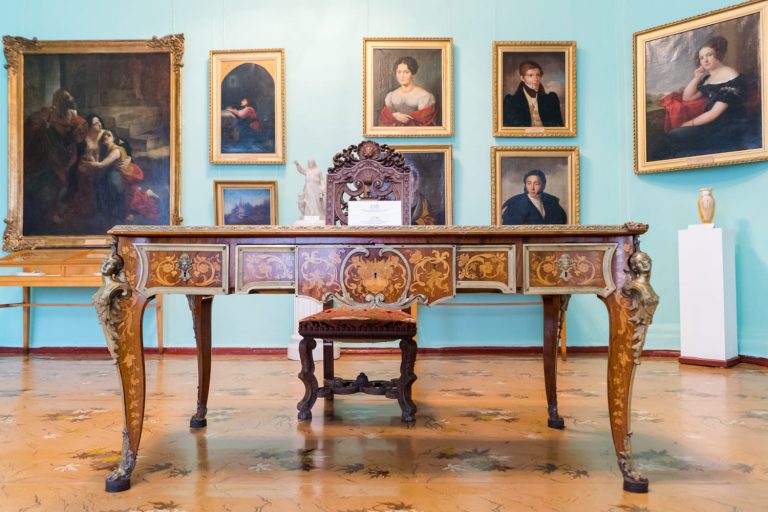
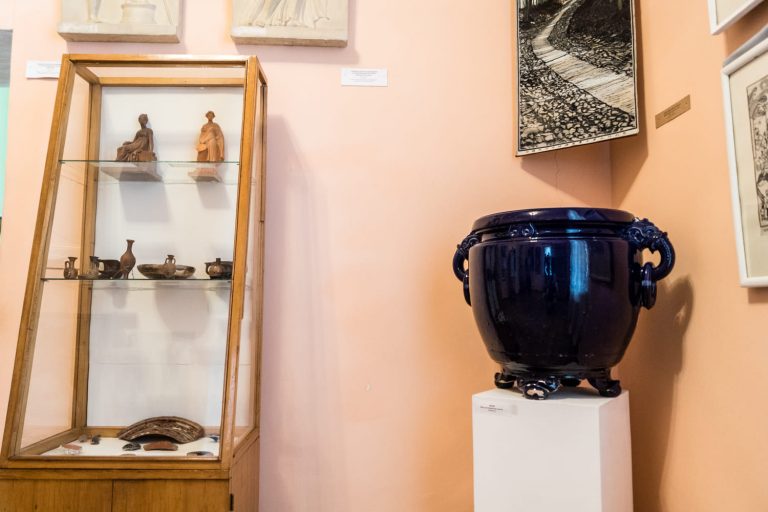
slideshow
A bright example of the interaction, when children became curators of the exhibition, was implemented in 2015 by the National Museum in Warsaw. During the ‘Anything Goes’ Museum educational experiment, 69 children aged 6–14 were divided into six curatorial teams. Over six months, these groups had studied the museum exhibits creating original exhibitions.
‘Schirn’ gallery in Frankfurt has also developed an unusual way of getting children acquainted with art: the gallery created a special educational and playful space which resembles a big tree house, separated by the exhibition halls. In the space, children can open rooms one after another, explore the colours, shapes, create something, and experiment.
The similar interactive museum has been working in a Carpathian village Vyhoda in Halychyna since 2016. Its exposition introduces the ecosystem of the Carpathians, and history of the local narrow-gauge railway to the visitors. It also enables visitors to solidify the received information through a game.
Since 2015, Mystetskyi Arsenal each year holds the Arsenal of Ideas Festival dedicated to innovative approaches to extra-curricular education.
Museum art collection is also exhibited in the village Kmytiv in Polissia. Its founder Yosyp Bukhanchuk taught civil defence at the Leningrad Academy of Arts, where he met lots of artists and decided to create a museum. He collected and gave hundreds of artworks to the village collection. The Kmytiv museum specializes in soviet art, especially the art of the 1950-80s.

Apart from exhibition and research works, the museum in Parkhomivka holds meetings with artists, musicians, and composers. Every two years, ‘Malevych+’ art event takes place in the museum. It tells the participants about Malevych artworks and gathers artists who work in the same direction.
Despite the founder’s death in 2004, the museum continues working with children. The museum teaches them to understand and love art since their nursery years. The drawings of the local students become a part of the thematic exhibitions, and that allows children to understand the value of their works. In school, starting from the 1st grade, there are various master-classes, practical workshops and quests for the students. Additionally, research workers of the museum come to the school to give lectures:
— We prepared the whole series of lectures for each grade. At literature, fine arts, history and local studies, we give lectures that enable children to have a better understanding of the culture of a certain period in history. The museum can deepen children’s knowledge, and change their attitude towards studying at school. It helps children learn the information in a different way and widen their horizons.

